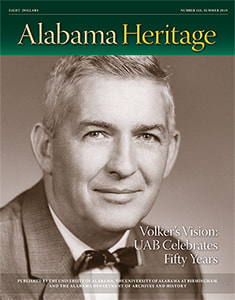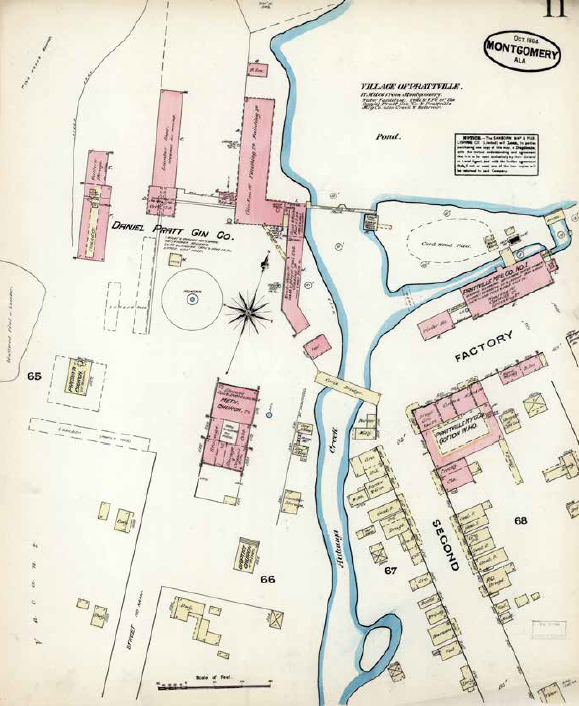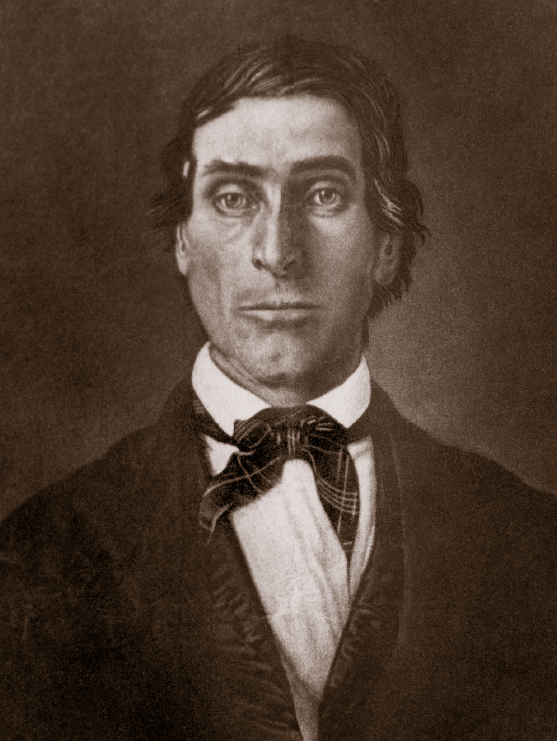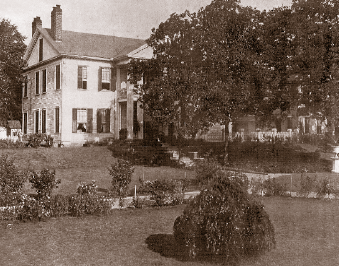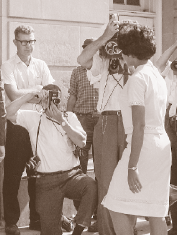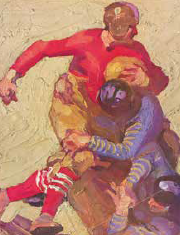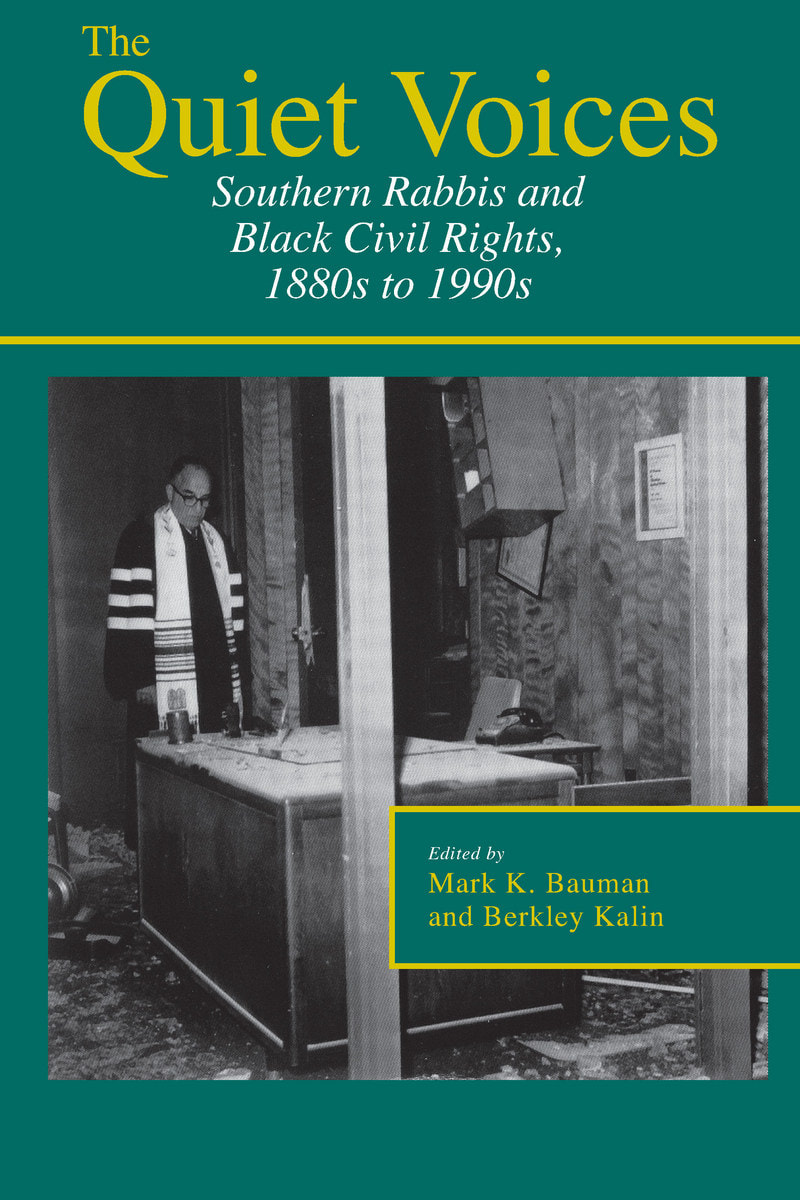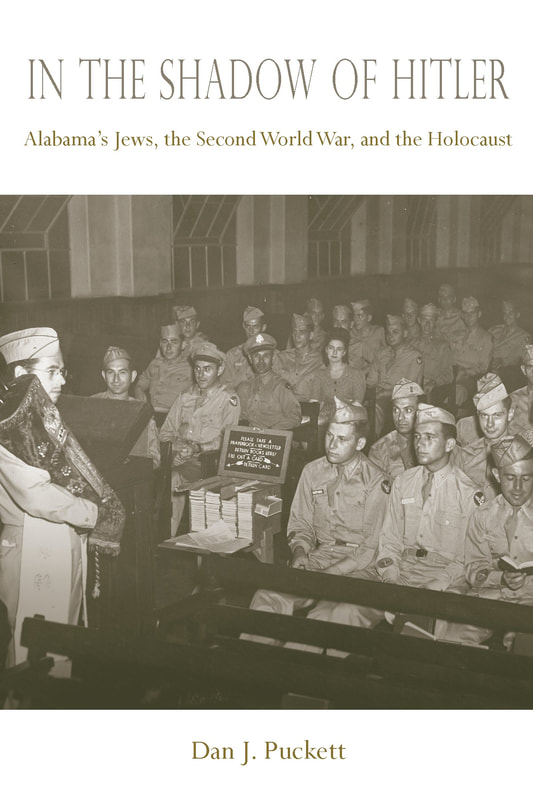|
On the cover: Joseph Volker, first president of UAB. (UAB Archives, University of Alabama at Birmingham)
|
FEATURE ABSTRACTS
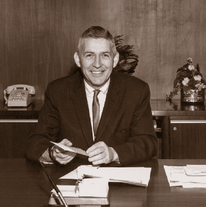 Volker at the beginning of his term as president of UAB. (UAB Archives, University of Alabama at Birmingham)
Volker at the beginning of his term as president of UAB. (UAB Archives, University of Alabama at Birmingham)
Volker's Vision
The University of Alabama at Birmingham
by Cary Estes
It was perhaps not entirely likely that a New Jersey dentist would attend a conference in Birmingham and forever change the city’s history. However, that’s exactly what happened: Joseph Volker’s speech to the Alabama Dental Association attracted the attention of residents, who urged him to relocate to the South as dean of the new University of Alabama dental school. Over time, Volker’s enthusiasm, energy, and vision led to the founding of the University of Alabama at Birmingham—an institution that today boasts a sophisticated medical community and a campus with Volker Hall to commemorate the man whose vision enabled the institution to become what it is today.
About the Author
Cary Estes is a freelance writer based in Birmingham. He has written for a wide variety of publications, websites and organizations, including the Alabama Tourism Department, Associated Press, Birmingham Business Journal, Birmingham Magazine, Business Alabama magazine, Children’s Hospital, Delta Sky magazine, ESPN.com, Livability.com, NBCsports.com, PGATour.com, Southern Living, and Sports Illustrated. He previously spent 15 years working as a sportswriter at the Birmingham Post-Herald. A native of Birmingham who has lived in Alabama most of his life, Estes tries to write as much as possible about the people and places of the state. His writing philosophy is: “Everybody has a story to tell.”
Additional Information
Read more about UAB and Joseph Volker at the Encyclopedia of Alabama:
http://www.encyclopediaofalabama.org/article/h-2057
http://www.encyclopediaofalabama.org/article/h-1846
https://www.uab.edu/reporter
The University of Alabama at Birmingham
by Cary Estes
It was perhaps not entirely likely that a New Jersey dentist would attend a conference in Birmingham and forever change the city’s history. However, that’s exactly what happened: Joseph Volker’s speech to the Alabama Dental Association attracted the attention of residents, who urged him to relocate to the South as dean of the new University of Alabama dental school. Over time, Volker’s enthusiasm, energy, and vision led to the founding of the University of Alabama at Birmingham—an institution that today boasts a sophisticated medical community and a campus with Volker Hall to commemorate the man whose vision enabled the institution to become what it is today.
About the Author
Cary Estes is a freelance writer based in Birmingham. He has written for a wide variety of publications, websites and organizations, including the Alabama Tourism Department, Associated Press, Birmingham Business Journal, Birmingham Magazine, Business Alabama magazine, Children’s Hospital, Delta Sky magazine, ESPN.com, Livability.com, NBCsports.com, PGATour.com, Southern Living, and Sports Illustrated. He previously spent 15 years working as a sportswriter at the Birmingham Post-Herald. A native of Birmingham who has lived in Alabama most of his life, Estes tries to write as much as possible about the people and places of the state. His writing philosophy is: “Everybody has a story to tell.”
Additional Information
Read more about UAB and Joseph Volker at the Encyclopedia of Alabama:
http://www.encyclopediaofalabama.org/article/h-2057
http://www.encyclopediaofalabama.org/article/h-1846
https://www.uab.edu/reporter
Mobile's Bragg-Mitchell Mansion
A Legacy of Five Families
by Monica Tapper
The Bragg-Mitchell Mansion, a mid-nineteenth-century dwelling that graces the Mobile landscape, holds several mysteries—including who its architect was and exactly what it was planned to look like originally. Despite this, much is known about the structure and about the five families who have inhabited it. These families—the Braggs, Pratts, Uphams, the Davis family, and the Mitchells—and their histories offer an insightful and entertaining view of the developing city and one of its distinctive structures.
About the Author
Monica Tapper teaches American history at Wallace Community College in Selma, Alabama, and is a docent at the Bragg-Mitchell Mansion. She has a bachelor’s degree in international studies and a master’s degree in history from the University of South Alabama. Her master’s thesis was entitled “The Life and Work of Novelist Mary Fenollosa: How Feminism, Class, and Race Influenced Her Life and Lasting Image.” She is a previous contributor to Alabama Heritage as well as the Encyclopedia of Alabama. Tapper extends special thanks to the Minnie Mitchell Archives at Oakleigh, the Local History & Genealogy Library, and the History Museum of Mobile.
Additional Information
Read more about the Bragg-Mitchell Mansion here:
https://braggmitchellmansion.com/
A Legacy of Five Families
by Monica Tapper
The Bragg-Mitchell Mansion, a mid-nineteenth-century dwelling that graces the Mobile landscape, holds several mysteries—including who its architect was and exactly what it was planned to look like originally. Despite this, much is known about the structure and about the five families who have inhabited it. These families—the Braggs, Pratts, Uphams, the Davis family, and the Mitchells—and their histories offer an insightful and entertaining view of the developing city and one of its distinctive structures.
About the Author
Monica Tapper teaches American history at Wallace Community College in Selma, Alabama, and is a docent at the Bragg-Mitchell Mansion. She has a bachelor’s degree in international studies and a master’s degree in history from the University of South Alabama. Her master’s thesis was entitled “The Life and Work of Novelist Mary Fenollosa: How Feminism, Class, and Race Influenced Her Life and Lasting Image.” She is a previous contributor to Alabama Heritage as well as the Encyclopedia of Alabama. Tapper extends special thanks to the Minnie Mitchell Archives at Oakleigh, the Local History & Genealogy Library, and the History Museum of Mobile.
Additional Information
Read more about the Bragg-Mitchell Mansion here:
https://braggmitchellmansion.com/
The Art of Making Men around You Wiser, Better, and Happier
Daniel Pratt and the Working Mill Village
by Sara Caroline Taricco
When Daniel Pratt traveled from his New Hampshire home to Alabama, he carried a significant concept for a new kind of community, one built around industry and commerce. He enacted that community vision through founding Prattville, Alabama, where he established a mill and a surrounding village intended to meet all the community needs. By locating the blacksmith’s shop, mills, churches, and other establishments near the mill workers’ homes, Pratt ensured that his employees had everything they needed for a prosperous, happy life. In doing so, he created a model community that inspired others across the south.
About the Author
Sara Caroline Taricco is a graduate from the BA art history program at the University of Alabama, and she is currently pursuing her MA in art history with a concentration in museum studies from the University of Denver. Having lived in Prattville, Alabama, for a short period of time growing up, Taricco found the town’s unique, and often unknown, place in southern history to be of great interest and therefore worth more scholarly attention. Taricco is currently writing her master’s thesis on modalities of affective engagement found at the Columbine High School temporary and permanent memorials from 1999–2019.
Additional Information
Read more about Daniel Pratt at the Encyclopedia of Alabama:
http://www.encyclopediaofalabama.org/article/h-1184
Daniel Pratt and the Working Mill Village
by Sara Caroline Taricco
When Daniel Pratt traveled from his New Hampshire home to Alabama, he carried a significant concept for a new kind of community, one built around industry and commerce. He enacted that community vision through founding Prattville, Alabama, where he established a mill and a surrounding village intended to meet all the community needs. By locating the blacksmith’s shop, mills, churches, and other establishments near the mill workers’ homes, Pratt ensured that his employees had everything they needed for a prosperous, happy life. In doing so, he created a model community that inspired others across the south.
About the Author
Sara Caroline Taricco is a graduate from the BA art history program at the University of Alabama, and she is currently pursuing her MA in art history with a concentration in museum studies from the University of Denver. Having lived in Prattville, Alabama, for a short period of time growing up, Taricco found the town’s unique, and often unknown, place in southern history to be of great interest and therefore worth more scholarly attention. Taricco is currently writing her master’s thesis on modalities of affective engagement found at the Columbine High School temporary and permanent memorials from 1999–2019.
Additional Information
Read more about Daniel Pratt at the Encyclopedia of Alabama:
http://www.encyclopediaofalabama.org/article/h-1184
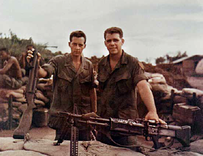 Bob Hilley and his friend Dick Wolfe pictured with captured enemy weapons. (Photo courtesy Randy and Roxanne Mills)
Bob Hilley and his friend Dick Wolfe pictured with captured enemy weapons. (Photo courtesy Randy and Roxanne Mills)
Battles Like This Don't Happen Every Day
The Forgotten Story of Alabama Vietnam War Hero Robert Lee Hilley
by Randy and Roxanne Mills
The Vietnam War ended nearly forty-five years ago, and as the time since the conflict grows, many people’s understanding of the events and their significant human cost fades. Primary sources—such as letters, photographs, and diaries from soldiers serving in Vietnam—offer poignant and descriptive glimpses of soldiers’ lives in country. The story of one such soldier, Alabamian Robert Lee Hilley, benefits from new details revealed in memorabilia sent home by one of Hilley’s best friends in the war, Dick Wolfe. Through Wolfe’s missives to family and friends and the photographs that often accompanied them, both men’s heroism and sacrifice become abundantly clear.
Correction: The description of the photo on page 38 says Hilley and Wolfe were with captured enemy weapons. Both were American weapons. The larger one in front is an M-60 machine gun. The smaller one held by Hilley is an M-79 grenade launcher.
About the Authors
Roxanne Mills is a professor of English at Oakland City University in Oakland City, Indiana. She is also the author of numerous professional articles on English education and regional Indiana history. Randy Mills is a professor of the social sciences at Oakland City University and is the author of numerous books and articles on Indiana and Midwest history. Their latest book, Summer Wind: A Soldier’s Road from Indiana to Vietnam, was published by Blue River Press in 2017. For more information about the authors, their books, and a link to their blog, visit their website at http://randrmillsauthors.com.
Additional Information
To learn more about Alabamians in the Vietnam War, see “Vietnam: The Alabama Experience” by Tracey Berezansky, which appeared in Alabama Heritage Issue 122.
Also read more about Robert Lee Hilley here:
http://www.virtualwall.org/dh/HilleyRL01a.htm
https://www.vvmf.org/Wall-of-Faces/23256/ROBERT-L-HILLEY/
The Forgotten Story of Alabama Vietnam War Hero Robert Lee Hilley
by Randy and Roxanne Mills
The Vietnam War ended nearly forty-five years ago, and as the time since the conflict grows, many people’s understanding of the events and their significant human cost fades. Primary sources—such as letters, photographs, and diaries from soldiers serving in Vietnam—offer poignant and descriptive glimpses of soldiers’ lives in country. The story of one such soldier, Alabamian Robert Lee Hilley, benefits from new details revealed in memorabilia sent home by one of Hilley’s best friends in the war, Dick Wolfe. Through Wolfe’s missives to family and friends and the photographs that often accompanied them, both men’s heroism and sacrifice become abundantly clear.
Correction: The description of the photo on page 38 says Hilley and Wolfe were with captured enemy weapons. Both were American weapons. The larger one in front is an M-60 machine gun. The smaller one held by Hilley is an M-79 grenade launcher.
About the Authors
Roxanne Mills is a professor of English at Oakland City University in Oakland City, Indiana. She is also the author of numerous professional articles on English education and regional Indiana history. Randy Mills is a professor of the social sciences at Oakland City University and is the author of numerous books and articles on Indiana and Midwest history. Their latest book, Summer Wind: A Soldier’s Road from Indiana to Vietnam, was published by Blue River Press in 2017. For more information about the authors, their books, and a link to their blog, visit their website at http://randrmillsauthors.com.
Additional Information
To learn more about Alabamians in the Vietnam War, see “Vietnam: The Alabama Experience” by Tracey Berezansky, which appeared in Alabama Heritage Issue 122.
Also read more about Robert Lee Hilley here:
http://www.virtualwall.org/dh/HilleyRL01a.htm
https://www.vvmf.org/Wall-of-Faces/23256/ROBERT-L-HILLEY/
DEPARTMENT ABSTRACTS
Portraits and Landscapes
Of Noisy Celebrations and Quiet Revolutions
By G. Ward Hubbs
As Alabama’s bicentennial approaches, many of its cities are pausing to consider their own significant milestones. One such city is Tuscaloosa, whose seminal events include being one of the state’s early capitals, the home of the University of Alabama, an important site during the Civil War, and a focal point for industrial development—from mining to automobile manufacturing. In addition to such more noteworthy events, Tuscaloosa has also witnessed a number of smaller changes throughout its two centuries.
About the Author
G. Ward Hubbs, Birmingham-Southern College professor emeritus, is archivist for the North Alabama Conference of the United Methodist Church. In 2019 the University of Alabama Press published his Tuscaloosa: 200 Years in the Making
Additional Information
To read more about G. Ward Hubbs' book click here:
http://www.uapress.ua.edu/product/Tuscaloosa,7065.aspx
Of Noisy Celebrations and Quiet Revolutions
By G. Ward Hubbs
As Alabama’s bicentennial approaches, many of its cities are pausing to consider their own significant milestones. One such city is Tuscaloosa, whose seminal events include being one of the state’s early capitals, the home of the University of Alabama, an important site during the Civil War, and a focal point for industrial development—from mining to automobile manufacturing. In addition to such more noteworthy events, Tuscaloosa has also witnessed a number of smaller changes throughout its two centuries.
About the Author
G. Ward Hubbs, Birmingham-Southern College professor emeritus, is archivist for the North Alabama Conference of the United Methodist Church. In 2019 the University of Alabama Press published his Tuscaloosa: 200 Years in the Making
Additional Information
To read more about G. Ward Hubbs' book click here:
http://www.uapress.ua.edu/product/Tuscaloosa,7065.aspx

Alabama Bicentennial Park
A Treasure for the Future
By Jay Lamar
Several significant and long-lasting commemorations plan to preserve Alabama’s bicentennial spirit for future generations. One such development is Montgomery’s Alabama Bicentennial Park. Adjacent to the state’s capital, the park will feature bronze reliefs depicting important aspects of the state’s history to date and will inspire Alabamians of all regions and backgrounds to reflect on Alabama’s legacy and their place within it.
About the Author
Jay Lamar is Executive Director of the Alabama Centennial Commission.
Additional Information
For more information about Alabama’s Bicentennial Park:
http://alabama200.org/engage/legacies/bicentennial-park/
A Treasure for the Future
By Jay Lamar
Several significant and long-lasting commemorations plan to preserve Alabama’s bicentennial spirit for future generations. One such development is Montgomery’s Alabama Bicentennial Park. Adjacent to the state’s capital, the park will feature bronze reliefs depicting important aspects of the state’s history to date and will inspire Alabamians of all regions and backgrounds to reflect on Alabama’s legacy and their place within it.
About the Author
Jay Lamar is Executive Director of the Alabama Centennial Commission.
Additional Information
For more information about Alabama’s Bicentennial Park:
http://alabama200.org/engage/legacies/bicentennial-park/
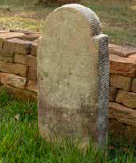 A child's grave marker in the Old Cemetery, one of the few visible remains of the state capital era. (Robin McDonald)
A child's grave marker in the Old Cemetery, one of the few visible remains of the state capital era. (Robin McDonald)
The Alabama Territory
Quarter by Quarter: Summer 1819
By Mike Bunn
Editor’s Note--Alabama Heritage, the Alabama Bicentennial Commission, and the Alabama Tourism Department offer this serialized history of Alabama’s road to statehood as part of Alabama’s bicentennial celebrations that will run from 2017 through 2019. Quarter by Quarter allows you to experience the story of the territorial era as it unfolds, ultimately culminating in Alabama’s acceptance into the union as a state—sometimes describing pivotal events, sometimes describing daily life, but always illuminating a world in flux. We will wait for the outcomes as our forebears did—over time.
This quarter’s installment of “The Alabama Territory” reflects on the state’s first legislative session and the challenges that officials of the new state faced. From enacting laws to establish social normal and legal parameters to establishing a state capital and navigating the thorny political waters of a visit from infamous Gen. Andrew Jackson and the death of the first governor, Alabama’s officials strove to lead the young state with grace and character.
About the Author
Mike Bunn serves as director at Historic Blakeley State Park in Spanish Fort, Alabama. This department of Alabama Heritage magazine is sponsored by the Alabama Bicentennial Commission and the Alabama Tourism Department.
Additional Information
To read earlier installments of “The Alabama Territory,” please see our website at www.AlabamaHeritage.com.
For more information about Alabama’s territorial period:
http://www.encyclopediaofalabama.org/article/h-1548
http://www.encyclopediaofalabama.org/article/h-3742
Quarter by Quarter: Summer 1819
By Mike Bunn
Editor’s Note--Alabama Heritage, the Alabama Bicentennial Commission, and the Alabama Tourism Department offer this serialized history of Alabama’s road to statehood as part of Alabama’s bicentennial celebrations that will run from 2017 through 2019. Quarter by Quarter allows you to experience the story of the territorial era as it unfolds, ultimately culminating in Alabama’s acceptance into the union as a state—sometimes describing pivotal events, sometimes describing daily life, but always illuminating a world in flux. We will wait for the outcomes as our forebears did—over time.
This quarter’s installment of “The Alabama Territory” reflects on the state’s first legislative session and the challenges that officials of the new state faced. From enacting laws to establish social normal and legal parameters to establishing a state capital and navigating the thorny political waters of a visit from infamous Gen. Andrew Jackson and the death of the first governor, Alabama’s officials strove to lead the young state with grace and character.
About the Author
Mike Bunn serves as director at Historic Blakeley State Park in Spanish Fort, Alabama. This department of Alabama Heritage magazine is sponsored by the Alabama Bicentennial Commission and the Alabama Tourism Department.
Additional Information
To read earlier installments of “The Alabama Territory,” please see our website at www.AlabamaHeritage.com.
For more information about Alabama’s territorial period:
http://www.encyclopediaofalabama.org/article/h-1548
http://www.encyclopediaofalabama.org/article/h-3742
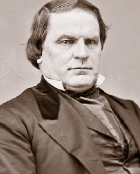 Gov. Lewis Eliphalet Parsons, Alabama’s first post-Civil War governor. (Library of Congress)
Gov. Lewis Eliphalet Parsons, Alabama’s first post-Civil War governor. (Library of Congress)
Alabama Governors
Lewis E. Parsons (1865)
By Samuel L. Webb
Alabama’s nineteenth governor, Lewis Parsons, served a brief term but remained influential during the state’s Reconstruction efforts. Though considered a “moderate Unionist” at the time of his appointment, Parsons acted in ways that aligned with Confederate interests, including by working to disenfranchise African American voters. This trend continued throughout his life, and even after leaving the governorship, Parsons advocated against civil rights efforts.
About the Author
Samuel L. Webb holds a JD from the University of Alabama School of Law and a PhD in history from the University of Arkansas. This department is drawn from Alabama Governors: A Political History of the State, second edition, edited by Webb and Margaret E. Armbrester (University of Alabama Press, 2014)
Additional Information
To learn more about Lewis E. Parsons:
http://www.encyclopediaofalabama.org/article/h-1169
Lewis E. Parsons (1865)
By Samuel L. Webb
Alabama’s nineteenth governor, Lewis Parsons, served a brief term but remained influential during the state’s Reconstruction efforts. Though considered a “moderate Unionist” at the time of his appointment, Parsons acted in ways that aligned with Confederate interests, including by working to disenfranchise African American voters. This trend continued throughout his life, and even after leaving the governorship, Parsons advocated against civil rights efforts.
About the Author
Samuel L. Webb holds a JD from the University of Alabama School of Law and a PhD in history from the University of Arkansas. This department is drawn from Alabama Governors: A Political History of the State, second edition, edited by Webb and Margaret E. Armbrester (University of Alabama Press, 2014)
Additional Information
To learn more about Lewis E. Parsons:
http://www.encyclopediaofalabama.org/article/h-1169
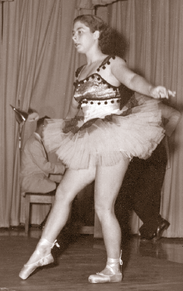 A US Army photographer took this photo of Rondia Sharron Widner at her performance in The Nutcracker at the NCO Club at Redstone Arsenal in 1955. Widner, only twelve years old here, went on to acclaim as a dancer at Auburn University. (Rondia Widner Turner)
A US Army photographer took this photo of Rondia Sharron Widner at her performance in The Nutcracker at the NCO Club at Redstone Arsenal in 1955. Widner, only twelve years old here, went on to acclaim as a dancer at Auburn University. (Rondia Widner Turner)
Behind the Image
The Nutcracker Ballet, 1950s Style
By Frances Osborn Robb
A photograph of a dancer reveals interesting information about the intersection of social and military history. Frances Osborn Robb, Alabama Heritage’s resident photographic sleuth, explores the image and learns about a special ballet at Huntsville’s Redstone Arsenal.
About the Author
Frances Osborn Robb is the contributing editor for the “Behind the Image” department of Alabama Heritage. She is the author of Shot in Alabama: A History of Photography, 1839–1941, and a List of Photographers (University of Alabama Press, 2017). She is passionate about historic photographs and thanks Rondia Widner Turner for her assistance with her story.
Additional Information
Read more about the Redstone Arsenal at:
http://www.encyclopediaofalabama.org/article/h-1882
The Nutcracker Ballet, 1950s Style
By Frances Osborn Robb
A photograph of a dancer reveals interesting information about the intersection of social and military history. Frances Osborn Robb, Alabama Heritage’s resident photographic sleuth, explores the image and learns about a special ballet at Huntsville’s Redstone Arsenal.
About the Author
Frances Osborn Robb is the contributing editor for the “Behind the Image” department of Alabama Heritage. She is the author of Shot in Alabama: A History of Photography, 1839–1941, and a List of Photographers (University of Alabama Press, 2017). She is passionate about historic photographs and thanks Rondia Widner Turner for her assistance with her story.
Additional Information
Read more about the Redstone Arsenal at:
http://www.encyclopediaofalabama.org/article/h-1882
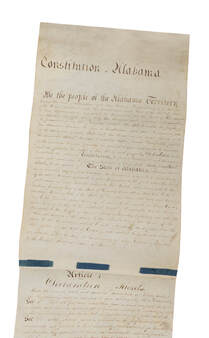 Alabama’s first constitution, drafted in Huntsville in 1819, will be returning to the city of its birth as part of We the People: Alabama’s Defining Documents, an exhibition of all six constitutions and the ordinance of secession. (Alabama Department of Archives and History)
Alabama’s first constitution, drafted in Huntsville in 1819, will be returning to the city of its birth as part of We the People: Alabama’s Defining Documents, an exhibition of all six constitutions and the ordinance of secession. (Alabama Department of Archives and History)
From the Archives
Alabama's Defining Documents
By Scotty E.Kirkland
In celebration of the Alabama bicentennial, the Alabama Department of Archives and History hosts an extremely important and rare exhibit, “We the People.” For a brief time, all six of the constitutions used by the state since its founding will be displayed together. These governing documents from 1819, 1861, 1865, 1868, 1875, and 1901offer a historic glimpse of Alabama’s history and the way it has governed itself since its origin as a state two centuries ago. To represent the state’s breadth, the documents will also be displayed this summer at the Huntsville Museum of Art, giving northern Alabama residents the opportunity to view these historic documents as well.
About the Author
Scotty E. Kirkland is exhibits, publications, and programs coordinator for the Alabama Department of Archives and History and a frequent contributor to Alabama Heritage.
Additional Information
Read more about Alabama’s Constitutions here:
http://www.encyclopediaofalabama.org/article/h-2925
http://www.encyclopediaofalabama.org/article/h-3868
Alabama's Defining Documents
By Scotty E.Kirkland
In celebration of the Alabama bicentennial, the Alabama Department of Archives and History hosts an extremely important and rare exhibit, “We the People.” For a brief time, all six of the constitutions used by the state since its founding will be displayed together. These governing documents from 1819, 1861, 1865, 1868, 1875, and 1901offer a historic glimpse of Alabama’s history and the way it has governed itself since its origin as a state two centuries ago. To represent the state’s breadth, the documents will also be displayed this summer at the Huntsville Museum of Art, giving northern Alabama residents the opportunity to view these historic documents as well.
About the Author
Scotty E. Kirkland is exhibits, publications, and programs coordinator for the Alabama Department of Archives and History and a frequent contributor to Alabama Heritage.
Additional Information
Read more about Alabama’s Constitutions here:
http://www.encyclopediaofalabama.org/article/h-2925
http://www.encyclopediaofalabama.org/article/h-3868
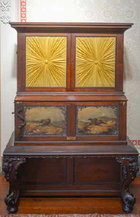 The Gaineswood flutina underwent a
major restoration beginning in 2000, then a final recording was made. (Teresa Boykin and the Alabama Historical Commission)
The Gaineswood flutina underwent a
major restoration beginning in 2000, then a final recording was made. (Teresa Boykin and the Alabama Historical Commission)
Alabama Treasures
Gaineswood Flutina
By Teresa Boykin
Often conservation and preservation conversations focus on the bigger structures of an era, such as homes, churches, and other buildings. However, often the items within these structures carry their own historic significance and their own (often complicated) preservation needs. Such is the case with Gaineswood, the former home of Gen. Nathan Witfield, and its flutina, a specially-commissioned barrel organ. Thanks to the Gaineswood staff’s careful efforts, visitors to the property can enjoy listening to music from the flutina and imagine what life was like for its first listeners.
About the Author
Teresa Boykin is a staff writer for the Demopolis Times and a lifelong Alabama resident.
Additional Information
For more information about Gaineswood, see its website (https://ahc.alabama.gov/properties/gaineswood/gaineswood.aspx) or its Encyclopedia of Alabama entry (http://www.encyclopediaofalabama.org/article/h-3020)
Gaineswood Flutina
By Teresa Boykin
Often conservation and preservation conversations focus on the bigger structures of an era, such as homes, churches, and other buildings. However, often the items within these structures carry their own historic significance and their own (often complicated) preservation needs. Such is the case with Gaineswood, the former home of Gen. Nathan Witfield, and its flutina, a specially-commissioned barrel organ. Thanks to the Gaineswood staff’s careful efforts, visitors to the property can enjoy listening to music from the flutina and imagine what life was like for its first listeners.
About the Author
Teresa Boykin is a staff writer for the Demopolis Times and a lifelong Alabama resident.
Additional Information
For more information about Gaineswood, see its website (https://ahc.alabama.gov/properties/gaineswood/gaineswood.aspx) or its Encyclopedia of Alabama entry (http://www.encyclopediaofalabama.org/article/h-3020)
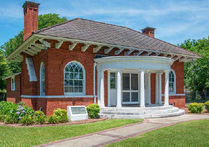 The Nichols Memorial Library in Gadsden, reportedly the first public library building in Alabama, was purchased by the Northeast Alabama Genealogical Society in 1973. (Robin McDonald)
The Nichols Memorial Library in Gadsden, reportedly the first public library building in Alabama, was purchased by the Northeast Alabama Genealogical Society in 1973. (Robin McDonald)
Adventures in Genealogy
The Nichols Memorial Library of Gadsden
By Donna Cox Baker
A valuable resource for genealogists, the Nichols Memorial Library of Gadsden holds a trove of materials to help unlock ancestral history. As the library of the Northeast Alabama Genealogical Society, it houses thousands of texts, including family histories and reference books. It is an essential tool in the researcher’s kit for learning more about family history and ancestry.
About the Author
Donna Cox Baker is the director of Alabama Heritage. She wrote Zotero for Genealogy: Harnessing the Power of Your Research and blogs at gegbound.com. We thank RoseMary Hyatt and Kathy Burttram of the NEAGS for their help in preparing this article.
Additional Information
Read more about the Nichols Memorial Library here:
http://neags.com/
The Nichols Memorial Library of Gadsden
By Donna Cox Baker
A valuable resource for genealogists, the Nichols Memorial Library of Gadsden holds a trove of materials to help unlock ancestral history. As the library of the Northeast Alabama Genealogical Society, it houses thousands of texts, including family histories and reference books. It is an essential tool in the researcher’s kit for learning more about family history and ancestry.
About the Author
Donna Cox Baker is the director of Alabama Heritage. She wrote Zotero for Genealogy: Harnessing the Power of Your Research and blogs at gegbound.com. We thank RoseMary Hyatt and Kathy Burttram of the NEAGS for their help in preparing this article.
Additional Information
Read more about the Nichols Memorial Library here:
http://neags.com/
Reading the Southern Past
Jews in and of the South
By Stephen Goldfarb
This quarter’s installment of “Reading the Southern Past” explores Jewish life throughout Alabama and neighboring states by reviewing Dan J. Puckett’s In the Shadow of Hitler: Alabama’s Jews, the Second World War, and the Holocaust (University of Alabama Press, 2014), Eli N. Evans’s The Provincials: A Personal
History of Jews in the South (University of North Carolina Press, 2005), and The Quiet Voices: Southern
Rabbis and Black Civil Rights, 1880s to 1990s, edited by Mark K. Bauman and Berkley Kalin (University of Alabama Press, 1997).
About the Author
Stephen Goldfarb holds a PhD in the history of science and technology. He retired from a public library in 2003.
Additional Information
To purchase these books, please see the following sites
http://www.uapress.ua.edu/product/In-the-Shadow-of-Hitler,5727.aspx
https://www.uncpress.org/book/9780807856239/the-provincials/
http://www.uapress.ua.edu/product/Quiet-Voices,893.asp
Jews in and of the South
By Stephen Goldfarb
This quarter’s installment of “Reading the Southern Past” explores Jewish life throughout Alabama and neighboring states by reviewing Dan J. Puckett’s In the Shadow of Hitler: Alabama’s Jews, the Second World War, and the Holocaust (University of Alabama Press, 2014), Eli N. Evans’s The Provincials: A Personal
History of Jews in the South (University of North Carolina Press, 2005), and The Quiet Voices: Southern
Rabbis and Black Civil Rights, 1880s to 1990s, edited by Mark K. Bauman and Berkley Kalin (University of Alabama Press, 1997).
About the Author
Stephen Goldfarb holds a PhD in the history of science and technology. He retired from a public library in 2003.
Additional Information
To purchase these books, please see the following sites
http://www.uapress.ua.edu/product/In-the-Shadow-of-Hitler,5727.aspx
https://www.uncpress.org/book/9780807856239/the-provincials/
http://www.uapress.ua.edu/product/Quiet-Voices,893.asp
